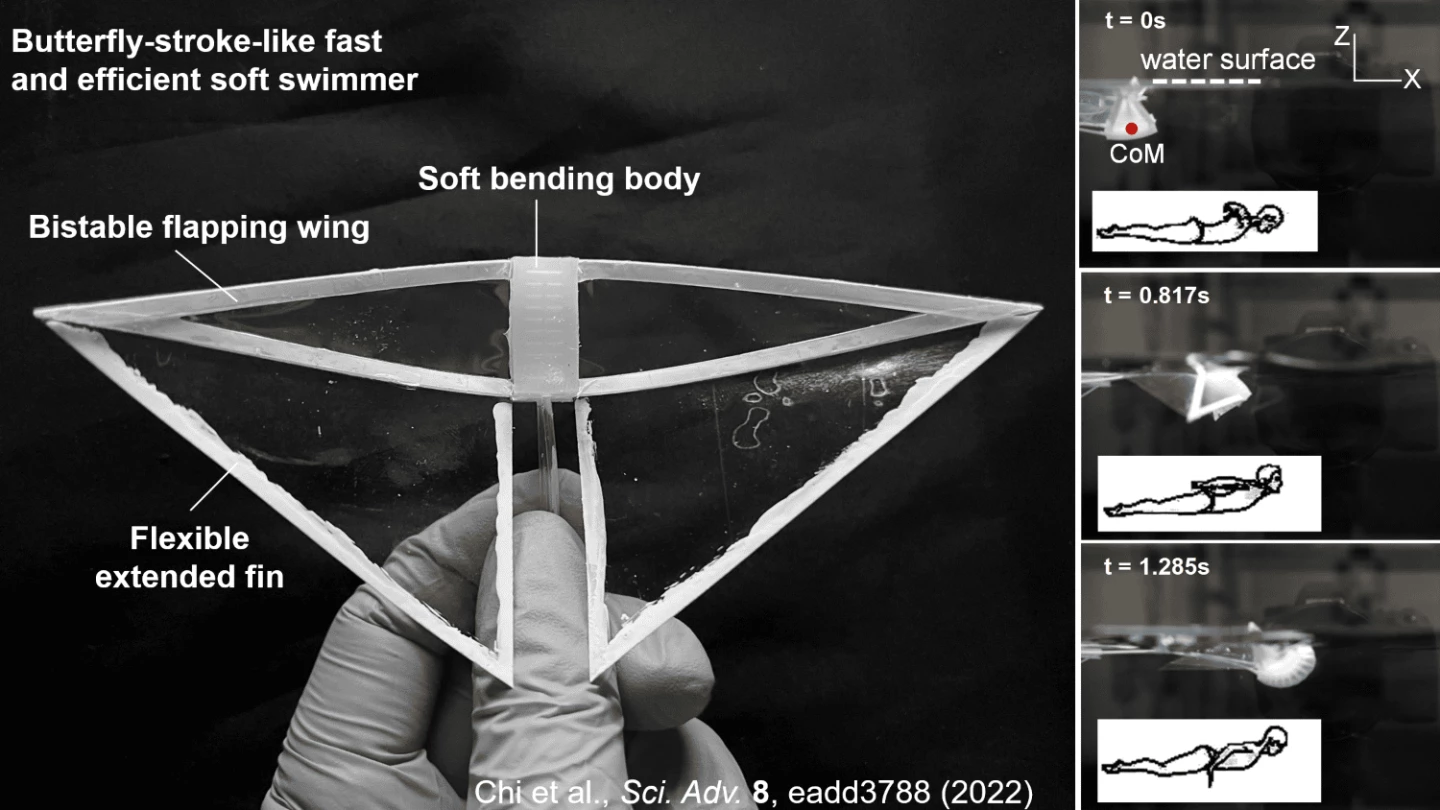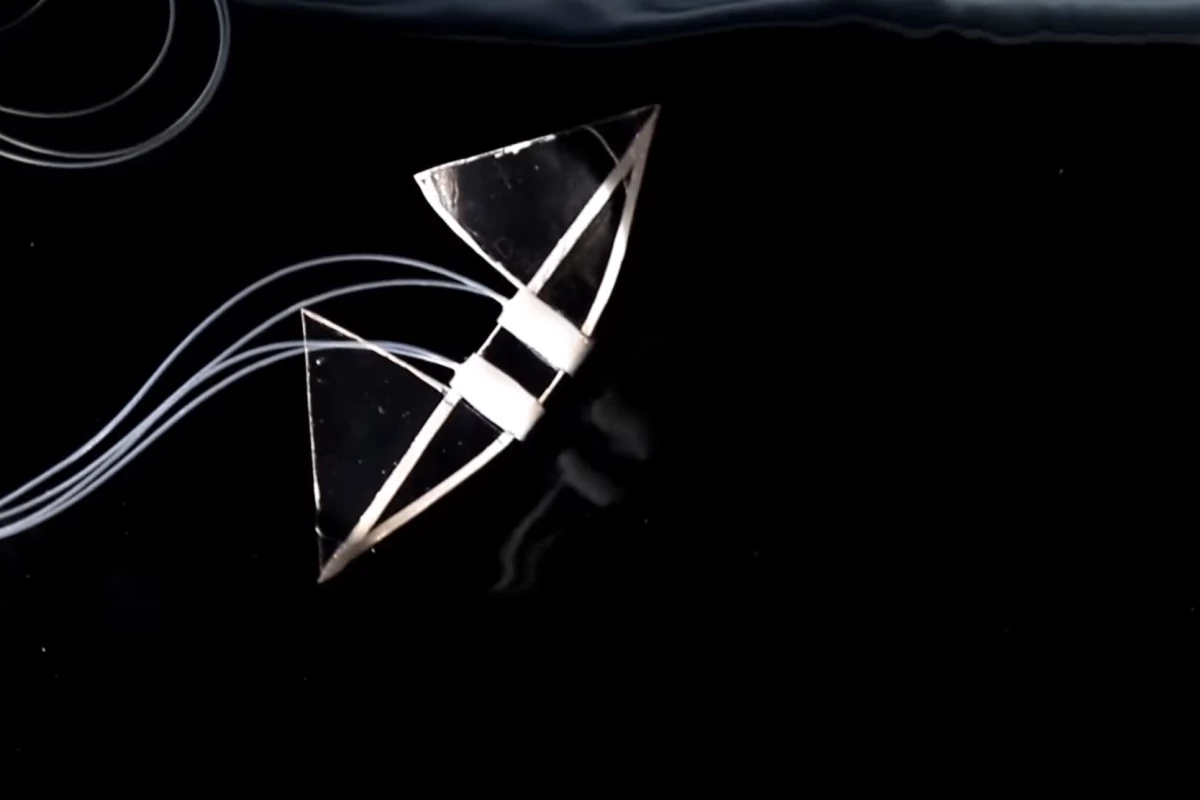Scientists regularly draw ideas from the natural world in a bid to improve robotic performance, and when it comes to soft robots that swim, motion in the ocean is a rich source of inspiration. The latest creation to emerge in this space is a soft robot modeled on the manta ray that mimics butterfly stroke in humans to move through the water with unparalleled speed.
Jellyfish, turtles, tuna and many other marine creatures have inspired soft robots that bring different capabilities to aquatic environments, but scientists at North Carolina (NC) State University have approached their work with a need for speed.
“To date, swimming soft robots have not been able to swim faster than one body length per second, but marine animals – such as manta rays – are able to swim much faster, and much more efficiently,” says Jie Yin, study author and associate professor of mechanical and aerospace engineering at NC State. “We wanted to draw on the biomechanics of these animals to see if we could develop faster, more energy-efficient soft robots. The prototypes we’ve developed work exceptionally well.”
We've seen soft robots modeled on the manta ray before, with some using flapping mechanisms to mimic their efficient propulsion, and others relying on passive systems with flexible fins to move more naturally with the water. The NC State team actually built two versions of their robot, both of which are designed around a soft silicone body that can be inflated and deflated with a switch.

As it does so, wings attached to the inflatable body switch between two stable states in a way the scientists liken to how a hair clip snaps between open and closed when enough energy is applied to it. As the body is inflated and deflated, the wings snap back and forth to generate propulsion in a way the researchers say is similar to how a person’s arms move during butterfly stroke.
“Most previous attempts to develop flapping robots have focused on using motors to provide power directly to the wings,” Yin says. “Our approach uses bistable wings that are passively driven by moving the central body. This is an important distinction, because it allows for a simplified design, which lowers the weight.”
The faster version of the “butterfly bot” uses the soft body as a single drive unit, controlling both wings at once for maximum speed. This enables it to travel at an average of 3.74 body lengths per second, around four times faster than what was previously possible for soft swimming robots, according to the team. A second robot built for maneuverability uses two drive units for control over either wing, enabling it to make tight turns. This more agile version, however, was still capable of traveling at 1.7 body lengths a second.
“This work is an exciting proof of concept, but it has limitations,” Yin says. “Most obviously, the current prototypes are tethered by slender tubing, which is what we use to pump air into the central bodies. We’re currently working to develop an untethered, autonomous version.”
You can see the robots in action in the video below, while the research was published in the journal Science Advances.
Source: North Carolina State University





